This information provides the operational requirements and conditions for seatbelts in motor vehicles. All seat belts should be original equipment — as installed by the vehicle manufacturer — or compliant replacements.
Tongue and buckle assembly
Check the engagement of the tongue and buckle:
- The buckle and tongue assembly should securely latch together with only limited free play.
- The tongue should eject actively when released.
- There should be no visible cracks or other damage on the buckle
- The buckle cover must be in position and undamaged.
- The tongue should have no metal deformation or visible cracks on metal or plastic sections.
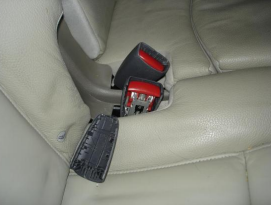
Example - damaged buckles
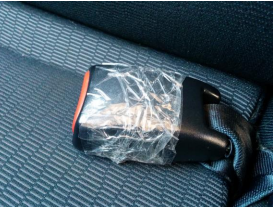
Example - damaged buckles
Pyrotechnical buckle pretensioner
If the pyrotechnical buckle pre-tensioner has fired, then the stalk cover will be deformed, and the buckle will sit low on the stalk. Both buckle and belt assemblies must be replaced.
Retractor
- Pull the belt out as far as it will go then release it. The belt should return all the way to the retractor without sticking, gripping, or stalling.
- The retractor should lock if the webbing is pulled out suddenly.
Webbing
- The webbing should be securely attached to its end fittings, displaying no stretching or pulled stitching.
- The webbing should be flat (untwisted and not tied in a knot) throughout its entire length.
- The webbing should not be:
- frayed
- burnt
- rippled
- split
- torn
- altered or modified.
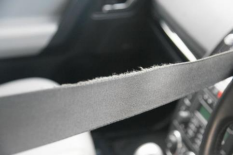
Example - fraying edge wear
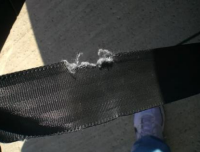
Example - excessive fraying
with edge damage - Look for severe fading as exposure to sunlight could reduce the strength; this could be apparent as visible texture change of the webbing fabric.
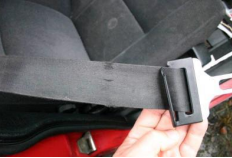
Example - stretch damage
from a collision
Note: The pictures shown above are examples only and not objective. The extent and type of damage will vary from one vehicle to another.
Anchorages
- Ensure all anchorages are securely attached and free from corrosion, distortion, cracks, fractures, or other damage likely to cause failure.
- All anchorages should be either:
- original equipment (as installed by the vehicle manufacturer), or
- approved fittings complying with Australian Design Rules (ADRs), or
- comply with the requirements of Vehicle Standards Bulletin 5 (VSB 5) Manufacture and Installation of Additional Seats.
- Seat belt assembly should be securely fastened to the anchorages.
Vehicle Standards reference: MR1545.

